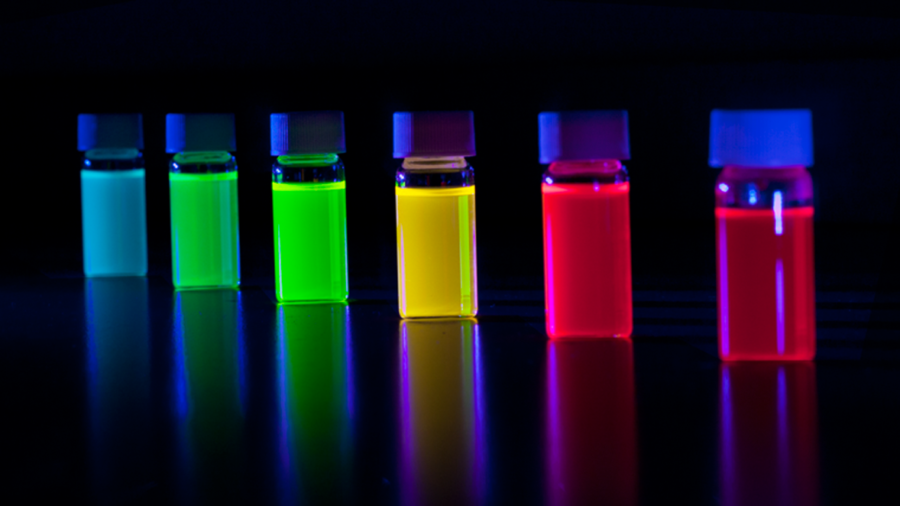Are Cadmium-Free Quantum Dots RoHS Conform?
The Restriction of Hazardous Substances (RoHS) directive is one of the prime regulations put in place to restrict the use of toxic materials in electrical and electronic equipment. Its prime concern is the mitigation of hazardous compounds entering the consumer waste stream with harmful impacts on animal and human health. RoHS conformity must be assured at multiple points in the supply chain (manufacture, import, distribution, etc.) in order to guarantee regulatory compliance. Failure to do so can result in remedial action and costly product recalls.
Cadmium-free quantum dots (QDs) are among the latest initiatives in the consumer electronics space designed to satisfy the needs of RoHS conformity. In this blog post, Avantama will explore how RoHS regulations have shaped the development of quantum dot technologies and offer insights into the conformity of distinct formulations.

Quantum Dots and RoHS Explained
Despite the exceptional functionalities of quantum dot technologies, high material processing costs and concerns regarding toxicity have limited their widespread integration into consumer markets. This is gradually changing with the onset of cost-effective roll-to-roll processing of quantum dot films based on thermally-stable chemistries yet concerns regarding toxicity persist.
The RoHS directive is most commonly associated with the restriction of lead (Pb), but it is an expansive piece of legislation that covers nine additional harmful materials. Among these are mercury (Hg) and cadmium (Cd).
Chronic exposure to the d-block metal cadmium can cause a host of detrimental side-effects and conditions (renal failure, skeletal lesions, itai-itai disease, etc.). Some first-generation quantum dots in electrical and electronic equipment are based on cadmium formulations. RoHS conformity mandated that cadmium be used at concentrations of less than 100 parts per million (ppm), but due to the lack of a viable alternative, an exemption was granted to a limit of 1’000 ppm. Owing to the ready availability of non-RoHS regulated InP, the RoHS exemption for cadmium is due to elapse, pushing the Cadmium limit back to 100 ppm (or 0.01% by weight). Therefore, the trend towards cadmium-free quantum dots is arguably driven by RoHS regulation.
Two of the leading alternatives to cadmium-based quantum dots are formulations based on indium phosphide (InP) or cesium lead halide (CsPbX3). Each of these is cadmium-free, but they come with their own restrictions and toxicity concerns.
Indium phosphide quantum dots are not restricted by RoHS regulations, due to the grant of a speculative exemption that is likely to elapse in the future. Research from several leading bodies worldwide has found that, far from being a non-toxic compound, indium phosphide may be as much as ten times more toxic than cadmium.
Lead halide quantum dots are beholden to long-standing RoHS restrictions mandating a limit of 1000 ppm (or 0.1% by weight) for lead. Perovskites based on cesium-lead compounds were the first truly cadmium-free quantum dots to eschew severe concerns regarding the toxicity of next-generation electrical devices. This highlights the importance of RoHS conformity, as well as a wider understanding of how restrictions are established and how an exemption differs from a classification of non-toxicity.
Cadmium-Free Quantum Dots from Avantama
Avantama is one of the leading developers of cadmium-free quantum dots based on novel chemical arrangements. We can assist in the generation of safe and efficient quantum dots based on your unique formulations.
If you need any more information about our quantum dots, simply contact a member of the Avantama team today.